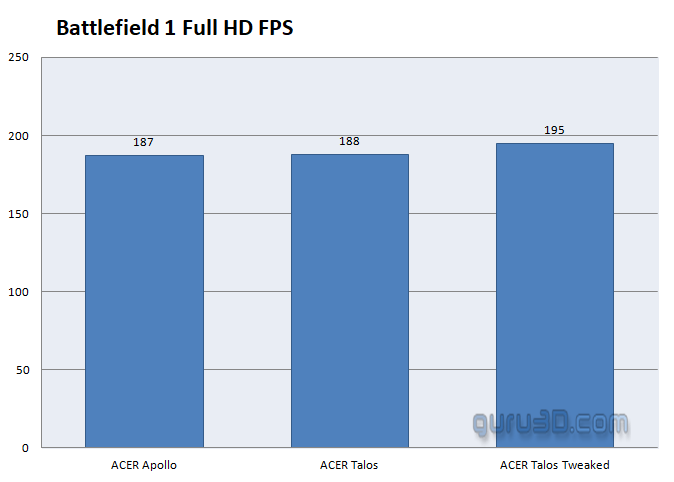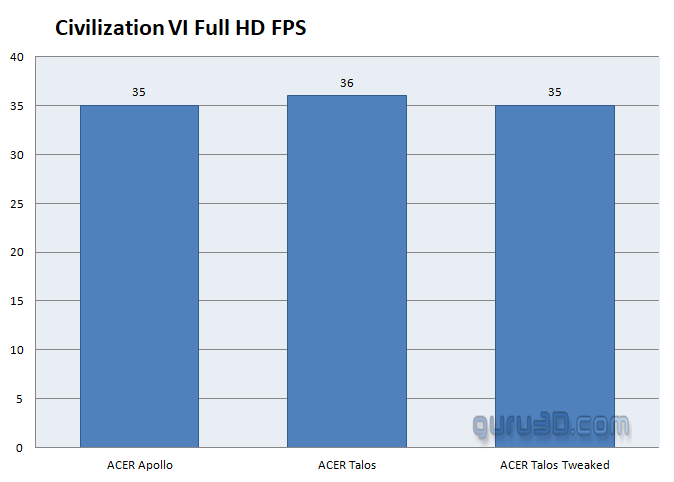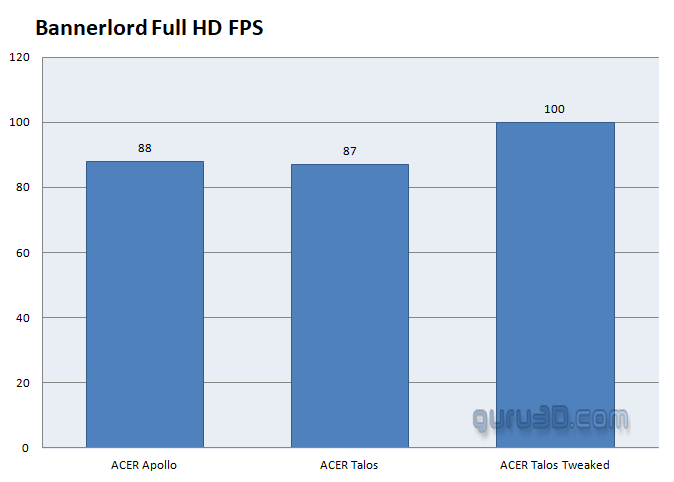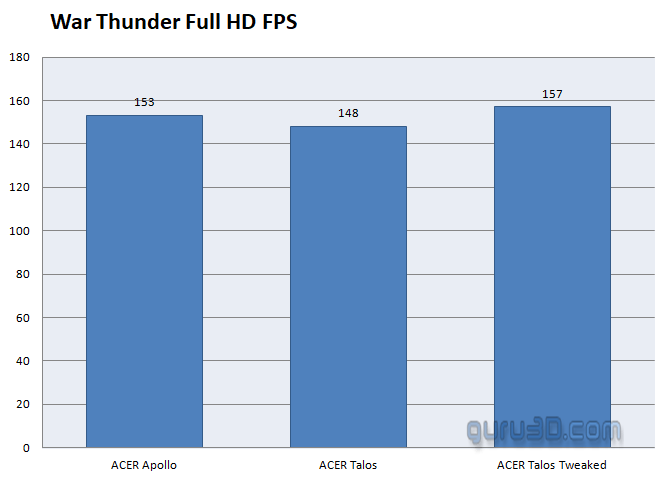Gaming Tests
Gaming Tests
Here, we run through a suite of four titles to test in-game performance when using the RAM’s XMP profiles and – in the case of the Talos kit – some manual tuning. Please note that due to the nature of some of the below results, a disclaimer is present in this review’s conclusion.
Battlefield 1
Whilst now an older game (released in 2016), Battlefield 1 proved itself to be quite taxing on CPUs and was – perhaps – the first true example of where 4-core CPUs (without hyperthreading) was no longer an adequate choice if you wanted top-tier performance out of a flagship GPU, e.g., a 980TI or R9 Fury X. Battlefield 1 has been run at 1920 x 1080 (DX11) at the ‘High’ graphical settings. The readings have been taken from the initial campaign mission with an effort made to keep to the same initial route each time. Once there, I repeated the same movements as closely as possible to ensure a fair result.
In BF1, the XMP profile of the lower latency Apollo kit provided a superior experience to that of the Talos (if only in terms of minimum FPS). So far, so good. But then we have the manually tuned Talos RAM providing not only additional FPS over the Apollo’s XMP profile, but also notably better minimum frame rates. Again, whilst results from BF1 are not 100% repeatable due to the nature of the game, this was a result I could consistently recreate.
Civilization 6
Civilization 6 has a benchmark mode that simulates an ‘end game’ situation on a ‘Huge’ map. The game is running at 2560 x 1440 (DX12) utilising the equivalent of the ‘Ultra’ graphical settings. Note that due to the nature of the benchmark we are running, the graphical settings used have no bearing on this result, so the above information is provided for consistency only.
Here, the results are within the margin of error. The test is entirely CPU-bound.
Mount & Blade: Bannerlord
This game has a reputation for being especially taxing on CPUs and one’s memory configuration can make a reasonable difference to performance, especially at lower resolutions like 1080p. As before, the game has been run at 1920 x 1080 utilising a mixture of ‘Very High’ and ‘High’ graphical settings. Readings from this title have been taken a custom 500 vs. 500 battle. To ensure consistency, the player character’s view was kept still and not moved for one minute.
The XMP profile of the Apollo was able to provide a more consistent experience than the Talos, indicating that – to some degree – Bannerlord is memory sensitive. This hunch was then confirmed by a substantial rise in both average and minimum frame rate performance when using the manually tuned Talos RAM kit.
War Thunder
This entry may come as a surprise to some, but it remains a highly popular online game that is surprisingly CPU dependant. It also, handily, contains an internal CPU benchmark. The game has been run at 1920 x 1080 using the ‘Ultra’ graphical settings. Nvidia DLSS was turned off, naturally.
This game sees the expected drop in performance when comparing the XMP profiles of the Apollo/Talos kits, but manually tuning the latter resulted in reasonable average frame rate gains. Minimum frame rates were also affected when manually tuning, but an outlier result of 108.7 FPS compared to a more consistent 105.8 should be taken with a few grains of salt… not that a 3 FPS difference was even remotely noticeable.





